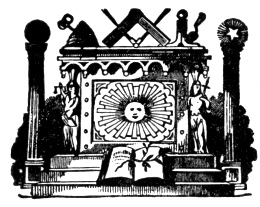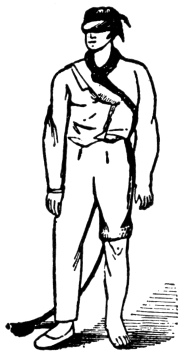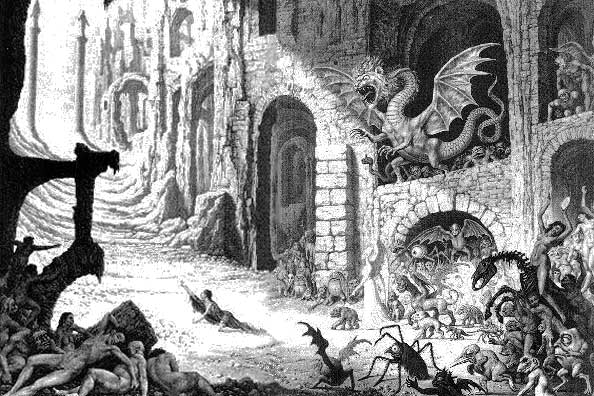[paragraph continues] Entered Apprentice, it is necessary you should have the working-tools of an Entered Apprentice, which are the twenty-four-inch gauge and common gavel.
W. M.–The twenty-four-inch gauge is an instrument made use of by operative masons to measure and lay out their work; but we, as Free and Accepted Masons, are taught to make use of it for the more noble and glorious purpose of dividing our time. It being divided into twenty-four equal parts, is emblematical of the twenty-four hours of the day which we are taught to divide
![]() into three parts, whereby we find a portion for the service of God and the relief of a distressed worthy brother, a portion for our usual avocations, and a portion for refreshment and sleep.
into three parts, whereby we find a portion for the service of God and the relief of a distressed worthy brother, a portion for our usual avocations, and a portion for refreshment and sleep.
W. M.–The common gavel is an instrument made use of by operative masons to break off the superfluous corners of rough stones, the better to fit them
 |
for the builder’s use; but we, as Free and Accepted Masons, are taught to make use of it for the more noble and glorious purpose of divesting our minds and consciences of all the vices and superfluities of life, thereby fitting us, as living stones, for that spiritual building, that house not made with hands, eternal in the heavens.
W. M.–Brother Gabe, there is a lecture to this Degree, consisting of three sections, which you will at your earliest opportunity commit to memory. 1 The first section treats of the manner of your initiation; the second section, the reasons wily, &c.; the third section, the form, furniture, lights, &c., &c. This lecture commences as follows:
FIRST SECTION.
Q. From whence came you? (Some say, As an Entered Apprentice Mason.)
p. 42
A. From a Lodge of the Sts. John of Jerusalem.
Q. What came you here to do?
A. To learn to subdue my passions and improve myself in Masonry.
Q. Then I presume you are a Mason?
A. I am so taken and accepted among all brothers and fellows. (See Note F, Appendix.)
Q. How do you know yourself to be a Mason?
A. By having been often tried, never denied, and willing to be tried again.
Q. How shall I know you to be a Mason?
A. By certain signs, a token, a word, and the perfect points of my entrance.
Q. What are signs?
A. Right angles, horizontals, and perpendiculars (![]() ,
,![]() ,
,![]() ).
).
Q. What are tokens?
A. Certain friendly or brotherly grips, by which one Mason may know another in the dark as well as in the light. Q. Give me a sign.
Here give sign of Entered Apprentice. (See Fig 2, p. 17.)
Q. Has that an allusion?
A. It has; to the penalty of my obligation.
Q. Give me a token.
Here give sign of Entered Apprentice. (See Fig. 2, p. 17.)
Q. I hail.
A. I conceal.
Q. What do you conceal?
A. All the secrets of Masons, in Masons, to which this (here press with thumb-nail the first joint hard) token alludes.
Q. What is that?
A. A grip.
Q. Of what?
A. Of an Entered Apprentice Mason.
Q. Has it a name?
A. It has.
Q. Will you give it me?
A. I did not so receive it, neither will I so impart it.
Q. How will you dispose of it?
A. I will letter it or halve it.
Q. Letter it, and begin.
A. No, you begin.
Q. Begin you. (Some say, No, you begin.)
A. A.
Q. B.
A. O.
p. 43
Q. Z.
A. Bo.
Q. Az.
A. Boaz.
Q. Where were you first prepared to be made a Mason?
A. In my heart.
Q. Where were you next prepared?
A. In a room adjacent to a regularly constituted Lodge of Free and Accepted Masons. (See Note G, Appendix.)

Moe is the founder of GnosticWarrior.com. He is a father, husband, author, martial arts black belt, and an expert in Gnosticism, the occult, and esotericism.






